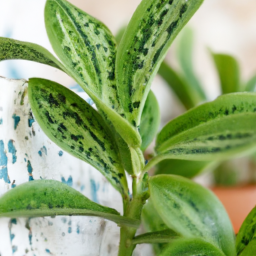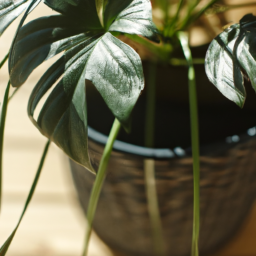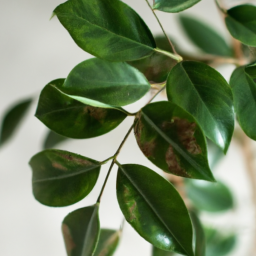
Are you looking to bring some greenery into your home but not sure where to start? In this blog post, we’ll explore different indoor plant types that are perfect for adding a touch of nature to your indoor space. Whether you’re a seasoned plant parent or a beginner looking to dip your toes into the world of indoor gardening, there’s a plant out there for everyone. Let’s dive in and discover the beauty and benefits of various indoor plant types that can thrive in your home.
Common Indoor Plant Types
1. Foliage Plants
One of the most popular types of indoor plants are foliage plants. These plants are known for their lush green leaves and are perfect for adding a touch of nature to any indoor space. Foliage plants come in a variety of shapes, sizes, and colors, making them versatile and easy to incorporate into your home decor.
Some popular foliage plants include the pothos, spider plant, and peace lily. These plants are relatively easy to care for and can thrive in a variety of indoor conditions. Foliage plants are great for purifying the air in your home and can help to create a peaceful and relaxing environment.
When caring for foliage plants, it’s important to provide them with the right amount of light, water, and humidity. Most foliage plants prefer indirect sunlight and should be watered when the top inch of soil feels dry. Regular misting can help to maintain the humidity levels that these plants thrive in.
2. Flowering Plants
Another popular type of indoor plant is the flowering plant. These plants are prized for their beautiful blooms and can add a pop of color to any room. Flowering plants come in a wide range of varieties, from orchids and African violets to begonias and peace lilies.
When caring for flowering plants, it’s important to provide them with the right amount of light and water. Most flowering plants prefer bright, indirect sunlight and should be watered when the top inch of soil feels dry. Some flowering plants, like orchids, require specific care and attention to thrive.
When choosing flowering plants for your home, consider the amount of light and space available in each room. Some flowering plants require more sunlight than others, so it’s important to place them in a location where they will receive adequate light throughout the day.
3. Succulents and Cacti
If you’re looking for low-maintenance indoor plants, succulents and cacti are a great option. These plants are known for their unique shapes and textures, as well as their ability to store water in their leaves and stems. Succulents and cacti come in a variety of shapes and sizes, making them a fun and interesting addition to any indoor space.
When caring for succulents and cacti, it’s important to provide them with plenty of sunlight and well-draining soil. These plants are drought-tolerant and should be watered sparingly, allowing the soil to dry out completely between waterings. Overwatering can cause root rot and other issues, so it’s important to err on the side of underwatering when caring for succulents and cacti.
Succulents and cacti are perfect for adding a touch of green to small spaces, like windowsills and desks. These plants are easy to care for and can thrive in a variety of indoor conditions, making them a great choice for beginner gardeners or anyone looking to add some greenery to their home.

Low-Maintenance Indoor Plant Varieties
Choosing the Right Low-Maintenance Indoor Plants
When it comes to choosing low-maintenance indoor plants, there are a few key factors to consider. First, think about the amount of light your space receives. Some plants thrive in bright, indirect light, while others can tolerate low light conditions. Consider the humidity levels in your home as well, as some plants prefer more moisture in the air.
Another important factor to consider is the size of the plant and how much space it will take up in your home. If you have limited space, look for plants that stay small or can be easily pruned. Additionally, consider how often you are willing to water your plants. Some low-maintenance plants only need to be watered once a week, while others may only need water once a month.
Once you have considered these factors, you can start exploring different low-maintenance indoor plant varieties. Some popular options include snake plants, pothos, spider plants, and peace lilies. These plants are known for their ability to thrive in a variety of conditions and require minimal care.
Tips for Caring for Low-Maintenance Indoor Plants
While low-maintenance indoor plants require less care than other varieties, it is still important to provide them with the proper conditions to thrive. One key aspect of caring for these plants is to ensure they are placed in the right location. Make sure they are receiving the appropriate amount of light and are not exposed to drafts or extreme temperatures.
Watering is another important aspect of caring for low-maintenance indoor plants. It is important not to overwater these plants, as this can lead to root rot. Instead, allow the soil to dry out between waterings and only water when the top inch of soil is dry to the touch.
In addition to proper watering and lighting, it is important to regularly inspect your plants for any signs of pests or disease. If you notice any issues, take action immediately to prevent them from spreading to other plants. Regularly dusting the leaves of your plants can also help them thrive by allowing them to absorb more light.
Benefits of Low-Maintenance Indoor Plants
There are many benefits to incorporating low-maintenance indoor plants into your home. Not only do they add a touch of greenery and beauty to your space, but they can also improve air quality by removing toxins and pollutants from the air. Studies have shown that indoor plants can help reduce stress and improve mood, making them a great addition to any home or office.
In addition to their aesthetic and health benefits, low-maintenance indoor plants can also be a cost-effective way to decorate your space. Many of these plants are affordable and easy to care for, making them a great option for beginners or those with busy schedules. With a little bit of care and attention, low-maintenance indoor plants can thrive and bring joy to your home for years to come.

Best Indoor Plants for Air Purification
Introduction
Indoor plants not only add beauty to your living space but also have the incredible ability to purify the air. In today’s world, where indoor air pollution is a major concern, having air-purifying plants in your home can make a significant difference in the quality of air you breathe. These plants not only remove toxins from the air but also release oxygen, creating a healthier environment for you and your family. In this article, we will discuss the best indoor plants for air purification and how you can benefit from having them in your home.
Snake Plant
The Snake Plant, also known as Mother-in-law’s Tongue, is a popular choice for indoor air purification. This plant is incredibly easy to care for and can thrive in low light conditions, making it perfect for beginners or those with limited natural light in their homes. The Snake Plant is known for its ability to remove toxins such as formaldehyde, benzene, and trichloroethylene from the air, making it a great choice for improving indoor air quality. In addition to its air-purifying properties, the Snake Plant is also known for its unique vertical leaves that add a touch of elegance to any room.
To care for your Snake Plant, place it in indirect sunlight and water it sparingly, allowing the soil to dry out between waterings. Avoid overwatering, as this can lead to root rot. The Snake Plant is a hardy plant that can withstand neglect, making it a great choice for those who may not have a green thumb. With proper care, your Snake Plant will thrive and continue to purify the air in your home.
In addition to its air-purifying properties, the Snake Plant is also known for its ability to release oxygen at night, making it an ideal plant to keep in your bedroom. By placing a Snake Plant in your bedroom, you can improve air quality while you sleep, promoting better overall health and well-being.
Spider Plant
The Spider Plant is another excellent choice for indoor air purification. This plant is known for its long, arching leaves and small white flowers, giving it a unique and attractive appearance. The Spider Plant is highly effective at removing toxins such as formaldehyde and xylene from the air, making it a great addition to any room in your home. In addition to its air-purifying properties, the Spider Plant is also easy to care for and can thrive in a variety of conditions, making it a versatile plant for indoor use.
To care for your Spider Plant, place it in indirect sunlight and water it regularly, keeping the soil evenly moist but not waterlogged. The Spider Plant prefers slightly humid conditions, so misting the leaves occasionally can help keep it healthy and happy. With proper care, your Spider Plant will produce small plantlets that can be repotted to create new plants, allowing you to expand your indoor garden effortlessly.
In addition to its air-purifying properties, the Spider Plant is also known for its ability to absorb carbon monoxide and other harmful gases, making it an excellent choice for improving indoor air quality. By adding a Spider Plant to your home, you can enjoy cleaner, fresher air while adding a touch of natural beauty to your living space.
Pothos
Pothos, also known as Devil’s Ivy, is a popular indoor plant that is loved for its vibrant green leaves and trailing growth habit. This plant is incredibly versatile and can thrive in a variety of conditions, making it an excellent choice for beginners or those looking to add greenery to their home. Pothos is highly effective at removing toxins such as formaldehyde, benzene, and carbon monoxide from the air, making it a great choice for improving indoor air quality. In addition to its air-purifying properties, Pothos is also known for its ability to thrive in low light conditions, making it an ideal plant for rooms with limited natural light.
To care for your Pothos, place it in indirect sunlight and water it when the top inch of soil feels dry to the touch. Pothos prefers slightly humid conditions, so misting the leaves occasionally can help keep it healthy and vibrant. This plant is a fast grower and can quickly fill a space with its lush foliage, making it a great choice for adding a touch of green to any room in your home.
In addition to its air-purifying properties, Pothos is also known for its ability to remove odors from the air, making it a great choice for kitchens, bathrooms, or any room where odors may be a concern. By adding a Pothos plant to your home, you can enjoy cleaner, fresher air while adding a touch of natural beauty to your living space.
By incorporating these air-purifying plants into your home, you can improve indoor air quality while adding a touch of natural beauty to your living space. Whether you choose the Snake Plant, Spider Plant, Pothos, or a combination of these plants, you can enjoy cleaner, fresher air and a healthier home environment. With proper care and maintenance, these plants will thrive and continue to purify the air, creating a more enjoyable living space for you and your family.
In a Nutshell
If you’re looking to spruce up your living space with some greenery, indoor plants are a fantastic option. There are so many different types of indoor plants to choose from, each with their own unique characteristics and care requirements. From low-maintenance succulents to air-purifying peace lilies, there’s a plant out there for everyone.
Some popular indoor plant types include spider plants, pothos, and snake plants. Spider plants are known for their long, arching leaves and ability to thrive in a variety of lighting conditions. Pothos plants are great for beginners, as they are easy to care for and can survive in low-light environments. Snake plants are perfect for those who tend to forget to water their plants, as they are extremely drought-tolerant. No matter your skill level or space constraints, there is an indoor plant type that will suit your needs and bring a touch of nature into your home.
Your Questions Answered. Comprehensive FAQ:
Q1: What are some popular types of indoor plants?
A1: Some popular types of indoor plants include pothos, snake plants, spider plants, peace lilies, and succulents. These plants are known for their ability to thrive indoors and require minimal care.
Q2: What are low-light indoor plants?
A2: Low-light indoor plants are plants that can thrive in areas with minimal natural light. Some examples of low-light indoor plants include ZZ plants, pothos, snake plants, and peace lilies. These plants are perfect for spaces that don’t receive a lot of sunlight.
Q3: How do I care for indoor plants?
A3: To care for indoor plants, make sure to water them regularly, but be careful not to overwater. Provide them with the right amount of sunlight based on their specific needs. You can also fertilize them occasionally and repot them when they outgrow their containers.
Q4: What are some easy-to-care-for indoor plants?
A4: Some easy-to-care-for indoor plants include snake plants, pothos, spider plants, and succulents. These plants are great for beginners or people who may not have a green thumb, as they require minimal maintenance and can thrive in various conditions.
Q5: How can I choose the right indoor plants for my space?
A5: When choosing indoor plants for your space, consider factors such as the amount of natural light available, the humidity levels, and the amount of space you have. Research the specific care requirements of each plant to ensure it will thrive in your environment. You can also consider your personal preferences in terms of plant size, shape, and color.
Dr. Olivia Green is a botanist with over two decades of experience in indoor plant cultivation. She holds a Ph.D. in Plant Biology and has dedicated her career to researching plant behavior in controlled environments. Dr. Green is passionate about helping plant enthusiasts master the art of indoor gardening through her extensive knowledge and practical insights.


